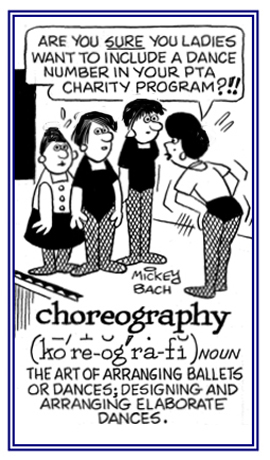choledochography
(s) (noun), choledochographies
(pl)
A radiographic examination of the common bile duct after the administration of a radiopaque or not permitting the passage of x-rays of the substance or medium: The choledochography is useful in the diagnosis of tumors and in the diagnosis of a mass in the upper right quadrant of the stomach.
chondrography
(s) (noun), chondrographies
(pl)
A written description of the cartilages:
Chondrography is a type of dense, non-vascular connective bodily tissue which is usually found at the end of bodily joints, the rib cage, the ear, the nose, in the throat and between inter vertebral disks.
A chondrography is a solid part of the animal body, between the bones and ligaments, which in the foetus is a substitute for bone, but in the adult exists only in the joints, at the extremities of the ribs, etc.
Cartilages of chondrographies are of a whitish color, flexible, compressible, and very elastic, and some of them are apparently inorganic.
choreograph
(s) (noun), choreographs
(pl)
1. A plan of dance movements to go with a piece of music: The choreograph was first prepared and then the dancers tried it out in the following rehearsal.
2. A preparation to coordinate and to supervise an event or an activity: Mr. Jones made the choreograph for the town's next pumpkins festival.
3. The direction of and development of a musical project; an orchestration: A choreograph was needed for Act 3 of the musical before it could be performed the following month.
choreographed
(adjective), more choreographed, most choreographed
A reference to the skillfulness in the combined movements of dances which have been planned or performed: Paul was experienced in presenting the choreographed movements of the special dancing performances that would be presented on Saturday at his local theater.
choreographer
(s) (noun), choreographers
(pl)
A person whose job is to plan the dance movements for a performance: Mr. Smith enjoyed his work as a choreographer for creating the design of the dancers' movements for the ballet production and, in addition, he had to tell the dancers how to perform them.
choreographic
(adjective), more choreographic, most choreographic
1. A reference to the composition and arrangement of dances, especially for ballet: Choreographic dancing is the art of designing sequences of movements in which motion, form, or both are specified.
2. Characterized by the art of composing ballets and other dances and planning and arranging the movements, steps, and patterns of dancers: Choreographic motions may also refer to the design itself and is used in a variety of fields other than dancing, including cheer leading, cinematography, gymnastics, fashion shows, ice skating, marching band, show choirs, dramas, synchronized swimming and video game productions.
choreographist
(s) (noun), choreographists
(pl)
Someone who plans and produces dancing presentations or entertainments for audiences: Adam and Evelyn were going to watch a TV program about dancing competitions that would be shown by several choreographists.
choreography
(s) (noun), choreographies
(pl)
1. The work or skill of planning dance movements to accompany music: The art of designing the
choreography for a ballet must be made in combination with the instrumental composition.
Shirley has staged many successful ballets, so her skills when performing choreography has proven to be superb.
2. The steps and movements planned for a dance routine or a written record of them: The notation employed for
choreography uses symbols just like music is represented by notes.
3. The carefully planned or executed organization of an event or the maneuvering of people or things: The
choreography of the surprise birthday party for Mildred had to be well planned because there were so many different activities involved.
 © ALL rights are reserved.
© ALL rights are reserved.
Go to this Word A Day Revisited Index
so you can see more of Mickey Bach's cartoons.
chorographer
(s) (noun), chorographers
(pl)
Someone who describes, or delineates, a particular country or region: Mr. Swift was a chorographer who created or drew maps of large areas, in contrast to small places or localities.
chorography
(s) (noun), chorographies
(pl)
The art or practice of describing, or of delineating on a map or chart, particular regions, or districts; as distinguished from geography, taken as dealing with the Earth in general, and (less distinctly) from topography, which deals with particular places, as towns, etc.
chromatography
(s) (noun), chromatographies
(pl)
1. A method of finding out which components a gaseous or liquid mixture contains that involves passing it through or over something that absorbs the different components at different rates: Chromatography involves the mixture of materials to be separated and percolated through a column or sheet of some suitable chosen absorbent; for example, an ion-exchange material; the substances least absorbed are least retarded and emerge the earliest; those more strongly absorbed emerge later.
2. The separation of chemical substances and particles; originally plant pigments and other highly colored compounds by differential movement through a two-phase system.
chromograph
(s) (noun), chromographs
(pl)
An apparatus or machine by which a number of copies of written matter, maps, plans, etc., can be produced: In Tim's university, he has access to a chromograph when he needs to produce images in print for his classes.
chromolithograph
(s) (noun), chromolithographs
(pl)
1. A colored picture produced by making and superimposing multiple lithographs, each of which adds a different color.
2. A picture printed in colors from stone.
chromolithography
(s) (noun)
The art or process of printing color pictures from a series of stone or zinc plates by lithography: Chromolithography includes all types of images that are printed or produced in colored forms.
chromoxylograph
(s) (noun), chromoxylographs
(pl)
A picture produced in colors from wooden blocks:
Chromoxylographs involve a method for making multi-colored prints using stones or metal plates because oil and water do not mix.
Artists utilize the lithographic process because the images or chromoxylographs are applied to a porous limestone or a zinc plate with a grease-based crayon or ink.
Related "writing" word units:
glypto-;
gram-;
scrib-, script-.



